Abstract
1. Surface electromyographic recordings were made in eight normal subjects from the isometrically contracting elbow flexors before and during forcible extension of the elbow through 7 degrees in 50-150 msec. 2. Weh the subjects were instructed prior (2-5 sec) to a forthcoming stretch to 'resist' or to 'let go', they could reliably enhance or suppress e.m.g. activity occurring between 40 and 70 msec from commencement of the stretch. Such e.m.g. activity represents a 'long-latency' (or 'M2') reflex response: it occurs with a latency longer than the spinal segmental monosynaptic reflex, but shorter than a voluntary reaction time. When the subjects were given their instructions (by means of a light) at the moment the stretch commenced, however, none of them could adjust the long-latency reflex appropriately. 3. It is concluded that central, evaluative processes commencing at the time of a perturbation cannot influence long-latency reflex responses to that perturbation.
Full text
PDF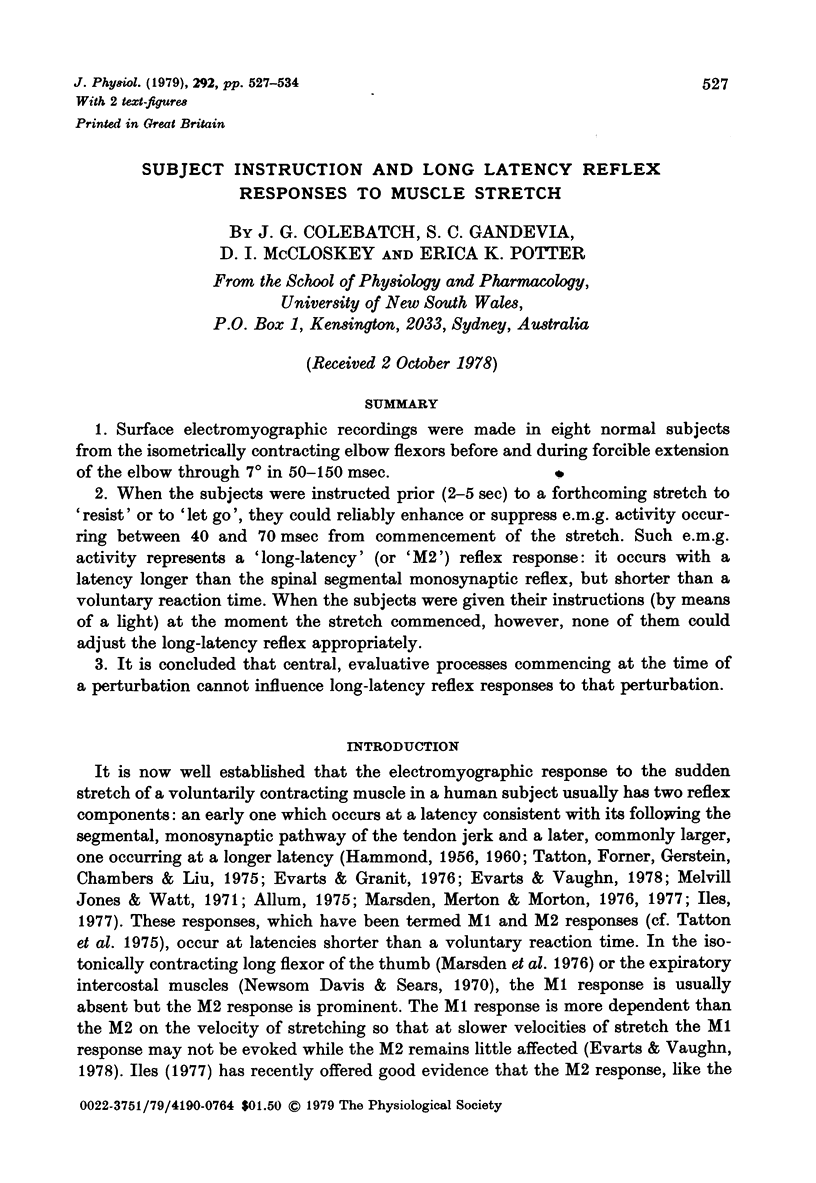
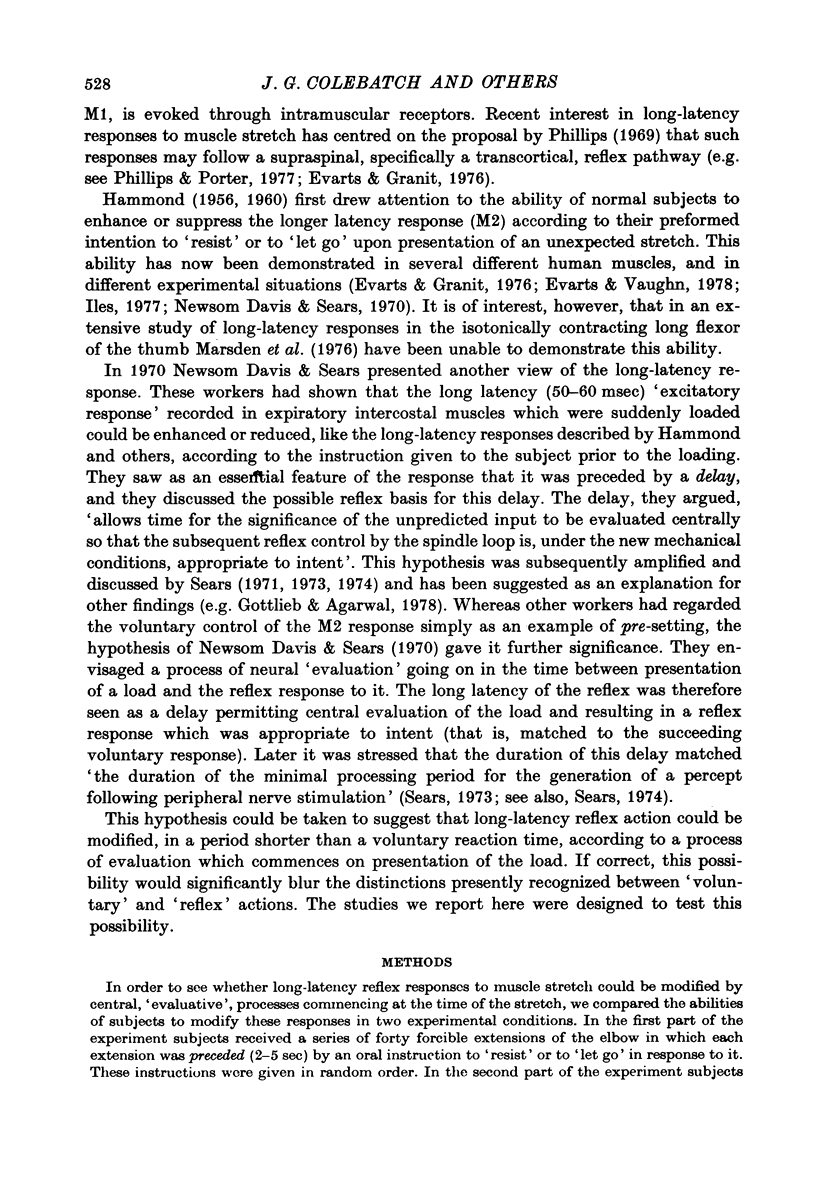
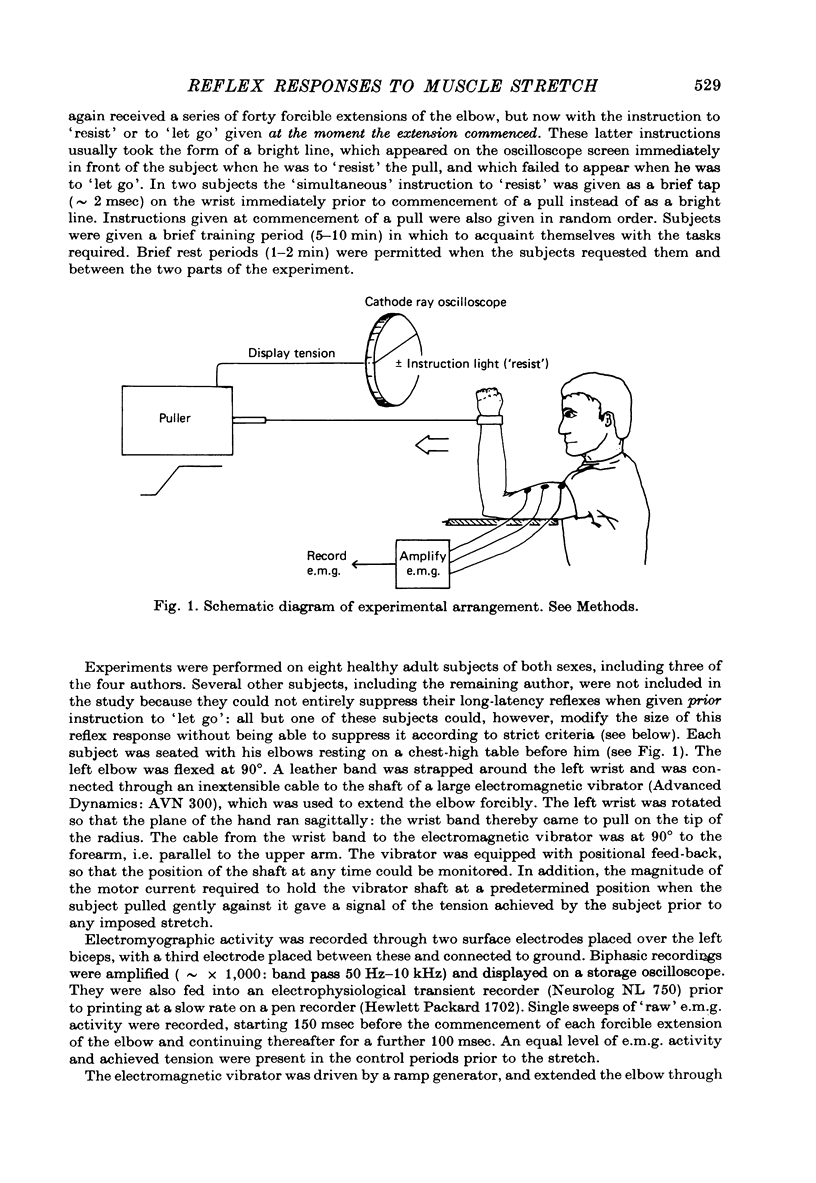
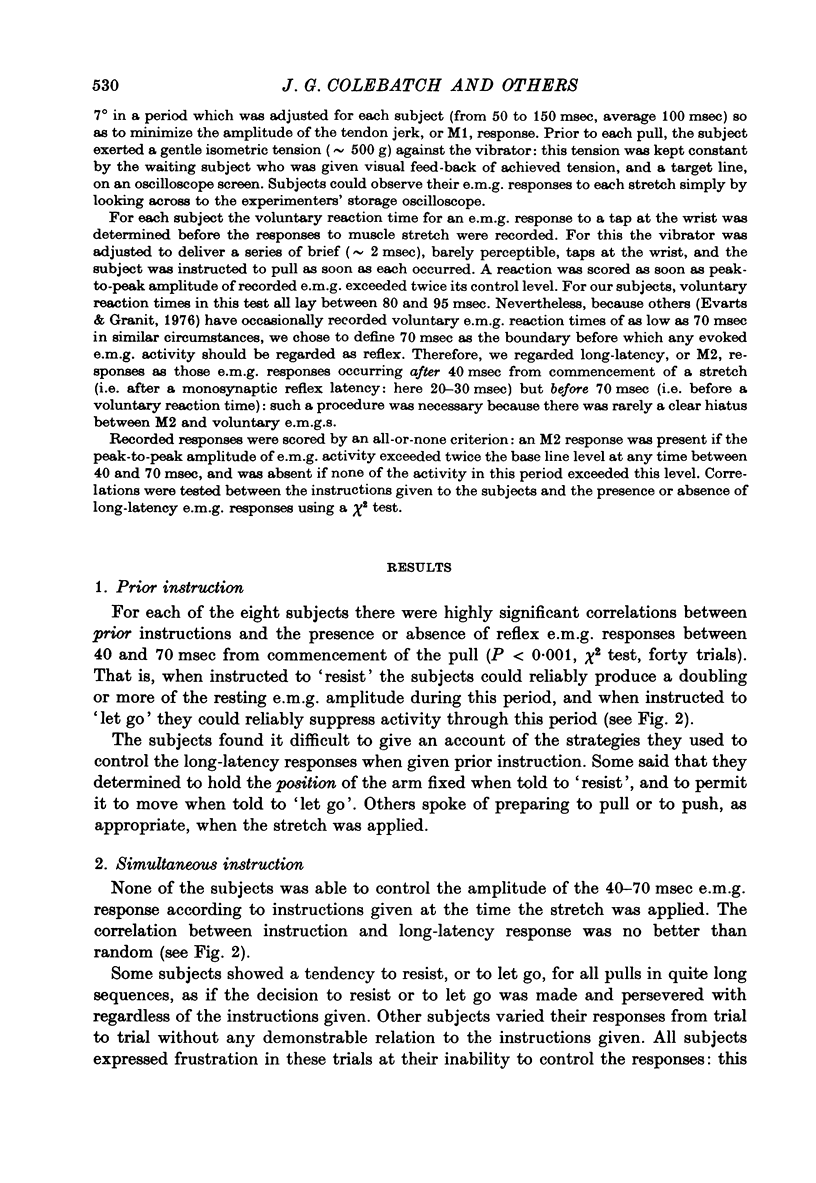
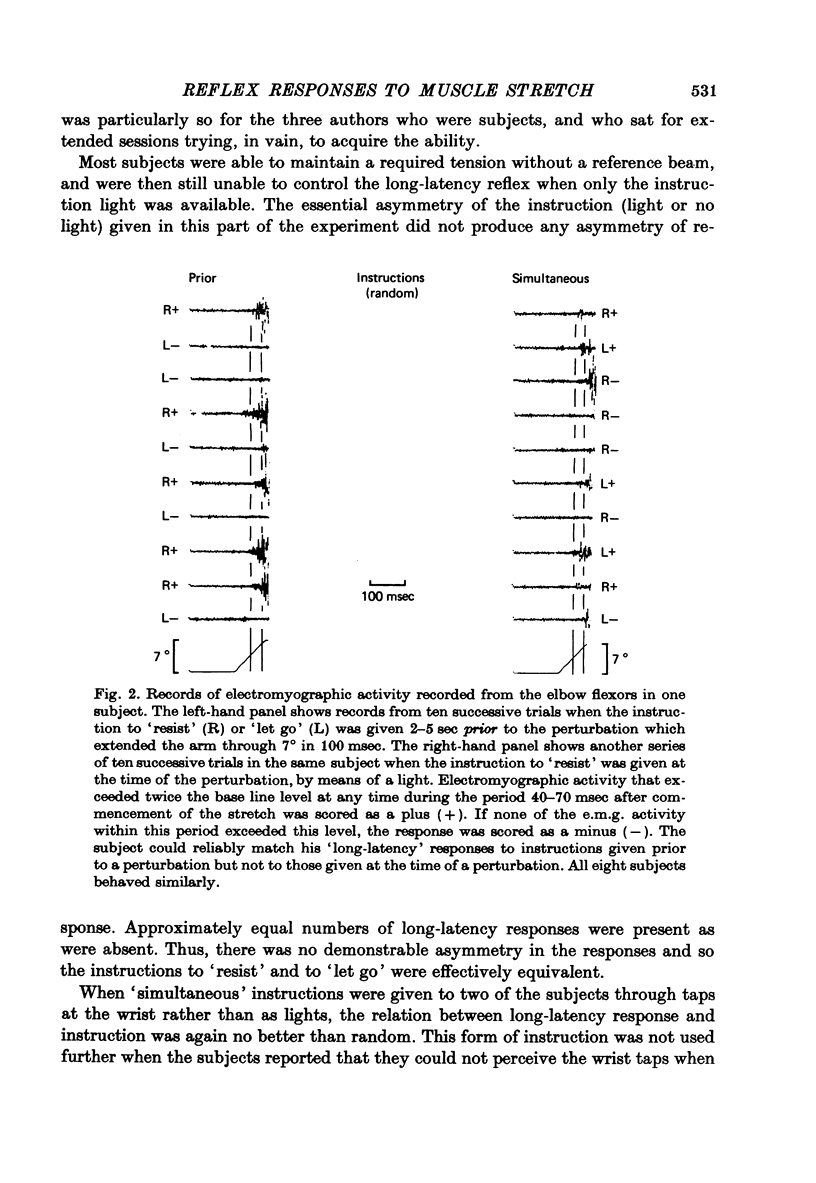
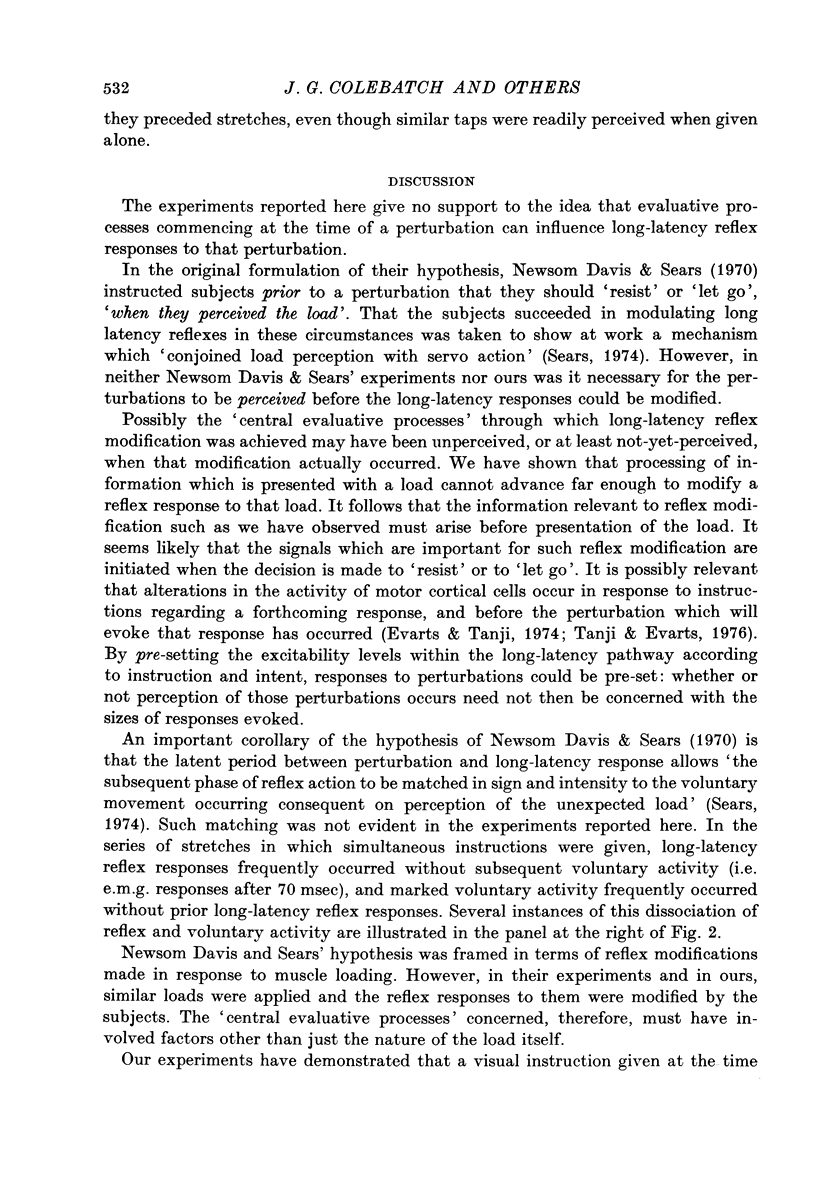
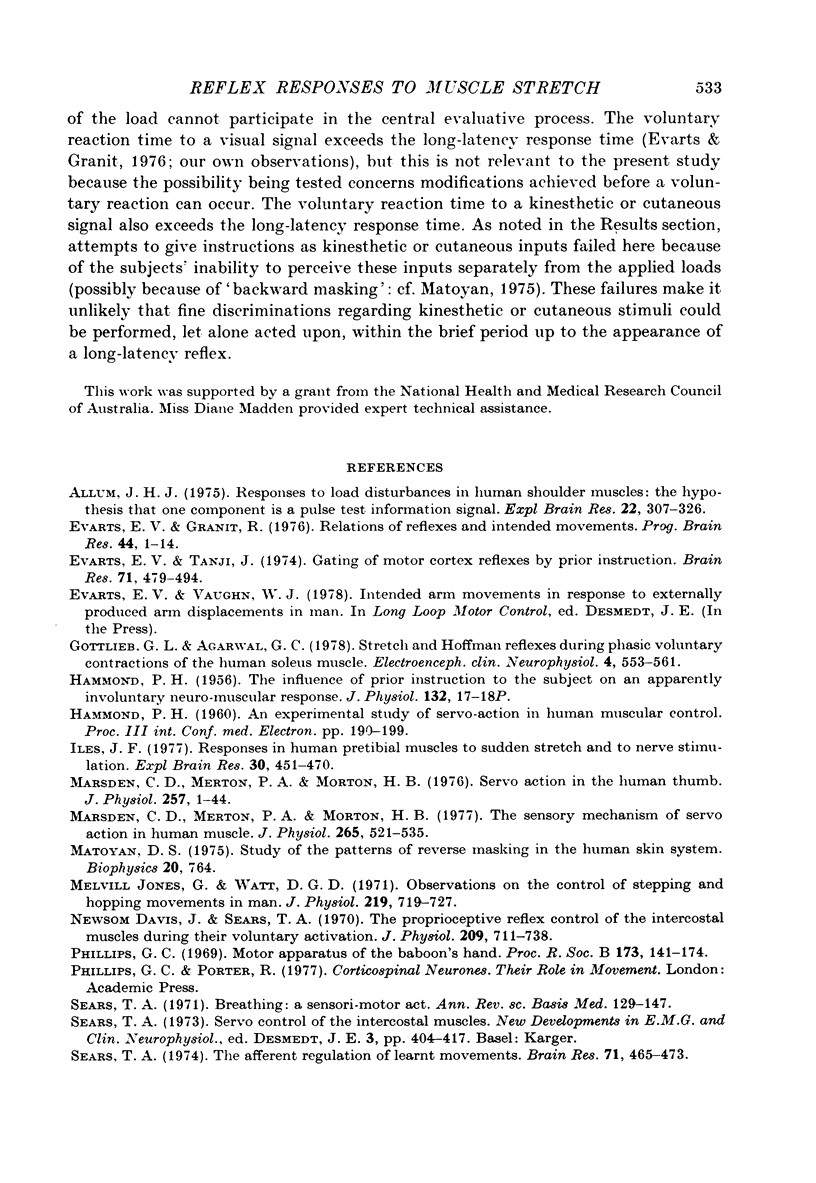
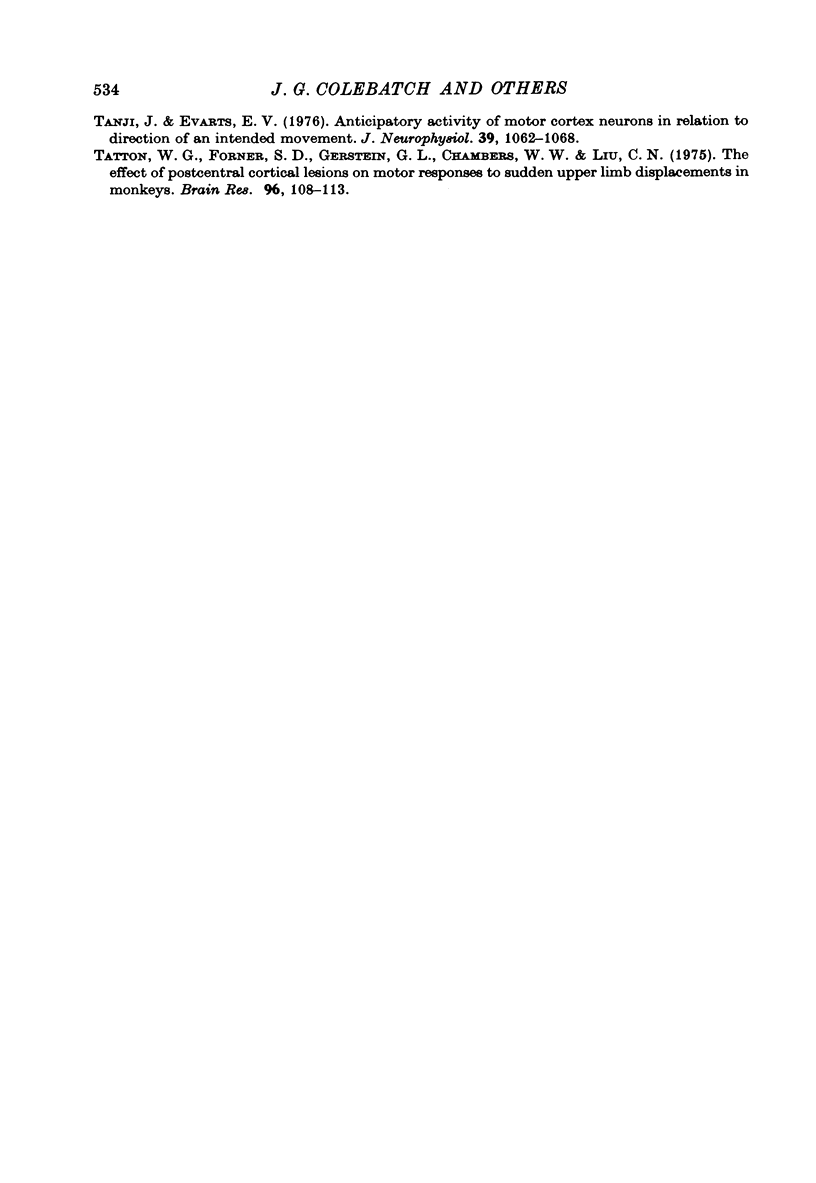
Selected References
These references are in PubMed. This may not be the complete list of references from this article.
- Allum J. H. Responses to load disturbances in human shoulder muscles: the hypothesis that one component is a pulse test information signal. Exp Brain Res. 1975 Mar 27;22(3):307–326. doi: 10.1007/BF00234772. [DOI] [PubMed] [Google Scholar]
- Davis J. N., Sears T. A. The proprioceptive reflex control of the intercostal muscles during their voluntary activation. J Physiol. 1970 Aug;209(3):711–738. doi: 10.1113/jphysiol.1970.sp009188. [DOI] [PMC free article] [PubMed] [Google Scholar]
- Evarts E. V., Granit R. Relations of reflexes and intended movements. Prog Brain Res. 1976;44:1–14. doi: 10.1016/S0079-6123(08)60719-0. [DOI] [PubMed] [Google Scholar]
- Evarts E. V., Tanji J. Gating of motor cortex reflexes by prior instruction. Brain Res. 1974 May 17;71(2-3):479–494. doi: 10.1016/0006-8993(74)90992-5. [DOI] [PubMed] [Google Scholar]
- HAMMOND P. H. The influence of prior instruction to the subject on an apparently involuntary neuro-muscular response. J Physiol. 1956 Apr 27;132(1):17–8P. [PubMed] [Google Scholar]
- Iles J. F. Responses in human pretibial muscles to sudden stretch and to nerve stimulation. Exp Brain Res. 1977 Dec 19;30(4):451–470. doi: 10.1007/BF00237637. [DOI] [PubMed] [Google Scholar]
- Jones G. M., Watt D. G. Observations on the control of stepping and hopping movements in man. J Physiol. 1971 Dec;219(3):709–727. doi: 10.1113/jphysiol.1971.sp009684. [DOI] [PMC free article] [PubMed] [Google Scholar]
- Marsden C. D., Merton P. A., Morton H. B. Servo action in the human thumb. J Physiol. 1976 May;257(1):1–44. doi: 10.1113/jphysiol.1976.sp011354. [DOI] [PMC free article] [PubMed] [Google Scholar]
- Marsden C. D., Merton P. A., Morton H. B. The sensory mechanism of servo action in human muscle. J Physiol. 1977 Feb;265(2):521–535. doi: 10.1113/jphysiol.1977.sp011728. [DOI] [PMC free article] [PubMed] [Google Scholar]
- Phillips C. G. The Ferrier lecture, 1968. Motor apparatus of the baboon's hand. Proc R Soc Lond B Biol Sci. 1969 May 20;173(1031):141–174. doi: 10.1098/rspb.1969.0044. [DOI] [PubMed] [Google Scholar]
- Sears T. A. Breathing: a sensori-motor act. Sci Basis Med Annu Rev. 1971:128–147. [PubMed] [Google Scholar]
- Sears T. A. The afferent regulation of learnt movements. Brain Res. 1974 May 17;71(2-3):465–473. doi: 10.1016/0006-8993(74)90990-1. [DOI] [PubMed] [Google Scholar]
- Tanji J., Evarts E. V. Anticipatory activity of motor cortex neurons in relation to direction of an intended movement. J Neurophysiol. 1976 Sep;39(5):1062–1068. doi: 10.1152/jn.1976.39.5.1062. [DOI] [PubMed] [Google Scholar]
- Tatton W. G., Forner S. D., Gerstein G. L., Chambers W. W., Liu C. N. The effect of postcentral cortical lesions on motor responses to sudden upper limb displacements in monkeys. Brain Res. 1975 Oct 10;96(1):108–113. doi: 10.1016/0006-8993(75)90580-6. [DOI] [PubMed] [Google Scholar]


